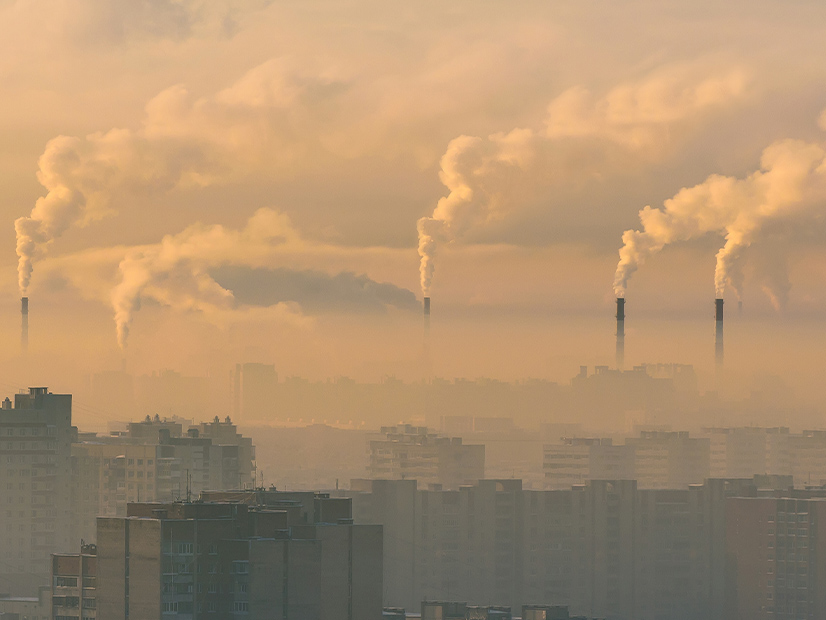
Discussion of the clean energy transition focuses too much on technology and not enough on the people who will make it work, speakers at the Global Clean Energy Action Forum said Thursday.
Leaders need to ensure the transition is just, the panelists said, and they also need to make it inclusive.
AFL-CIO President Liz Shuler said it is important to bring the voice and perspective of working people into the conversation and that it needs to be planned in advance rather than backfilled afterward.
“The term ‘just transition’ means different things to different people,” she said. “In the past we’ve seen transitions that have gone badly. I would argue the deindustrialization of the Midwest in the U.S., where manufacturing left, we didn’t have the right policy solutions in place, we didn’t have a proactive strategy to ensure that people transitioned into good jobs. People felt abandoned, left behind, angry and frustrated, and that has become destabilizing to our democracy. We can choose to do better this time.”
Angela Wilkinson, CEO of the World Energy Council, said the energy transition is not the destination but the process for reaching the destination; there needs to be a hopeful vision for what the destination is and what it means to people.
“Humanizing energy was an agenda we chose because we think the biggest gap in closing the implementation is the challenge of involving more people and very diverse communities in moving further, faster and fairly together,” she said.
The panelists broadly defined the goal as equal access for all to good-paying jobs carrying out the transition and equal benefits to all from completion of the transition.
Reuters reporter Valerie Volcovici, moderating the discussion, asked the panel about their thoughts on preparing a large skilled workforce for the epic task ahead. Electricians, she said, will be driving the transition in many ways; they are already in short supply on the cusp of a great expansion in their field.
“We have lots of technology, there is a lot of money available, but actually we have to create this mechanism for moving faster,” Wilkinson said. “And it’s communities that create … the pull for those technologies. So, the capabilities of the community are also what we need to think about. What’s the capability a community needs to be able to move its transition?”
Shuler said organized labor has been training skilled workers for more than a century and has been involved in multiple transitions during that time. It is important that the jobs created be good jobs, so that people will aspire to them, and also that there are multiple pathways to good careers.
“We are very centered around higher education and college being the solution for everyone, particularly in high schools,” she said. “And now we’re starting to see a resurgence in, ‘Yes, we do need electricians; we do need people with skills who can actually rebuild our nations across the world.’ Unions can be the pathway through apprenticeship and pre-apprenticeship — they’re almost like the other college degree. Four [to] five years it takes to grow a highly skilled electrician.”
Jonathan Wilkinson, Canada’s minister of natural resources (and no relation to Angela Wilkinson), said to bridge the labor gap, his country will need to rely on new immigrants and to include those it has historically excluded, particularly indigenous communities.
In Canada, 70% of the buildings standing today will still be standing in 2050 and will need a significant retrofit to meet decarbonization goals.
“That means you’re going to need tens of thousands of electricians and plumbers and construction workers, and those are occupations right now where we are struggling to find enough young people, given the demographics where lots of folks are retiring,” he said.
Volcovici asked how leaders can gain support and prevent fear in communities as the energy transition progresses, given the disruption caused by previous large-scale transitions.
Angela Wilkinson suggested involving communities so that they are helping direct the transition rather than sitting on the sideline hoping they won’t be left behind.
Shuler said specific details of the change are needed, so that people can see themselves in it.
Jonathan Wilkinson said the clean energy transition will be a hard sell for anyone who fears it will leave them behind, and said fear is stoked by widespread ignorance of what the transition is.
“[We need to] paint a much clearer picture for folks about what the energy transition actually means,” he said. “When people think about it, they think it means a solar panel on the roof or a wind turbine on the prairies. But obviously it’s a lot more than that, and I don’t think that policy makers have done a particularly good job of actually communicating that.”

